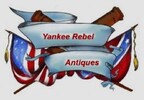 Loading... Please wait...
Loading... Please wait...-
Call us on (973) 810-2976
- My Account
- Gift Certificates
- Items / $0.00
All prices are in All prices are in USD
Categories
- Home
- Sold, Hold, Layaway items
- Very early Jesuit Missionary Crucifix, ca. 1690 – 1750 (SOLD)
Very early Jesuit Missionary Crucifix, ca. 1690 – 1750 (SOLD)
Out of Stock
Product Description
This is a rare piece being offered, it is a very early Jesuit missionary’s crucifix, ca. 1690 – 1750. It is flat and made of hand-forged iron measuring 4” x 2 ¾”, not counting the attached ring on top. It has decorative etchings on one side, one being a quatrefoil, which is a representation of a flower with four petals or a leaf with four leaflets. In fact, the word “quatrefoil” etymologically means “four leaves.” In Christian symbolism, the four leaves of the quatrefoil represent the four evangelists of the New Testament: Matthew, Mark, Luke, and John.
Jesuit missions in North America were attempted in the late 16th century in upstate New York and Canada. When established early in the 17th century, they faltered at the beginning of the 18th, disappeared during the suppression of the Society of Jesus around 1763, and returned around 1830 after the restoration of the Society.
The missions were established as part of the colonial drive of France and Spain during the period, the "saving of souls" being an accompaniment of the constitution of Nouvelle-France. The efforts of the Jesuits in North America were paralleled by their China missions on the other side of the world, and in South America. In the upstate New York region, they were also trying to convert the native Americans to Christianity.
This crucifix came out of an early collection in upstate New York. It is in very nice condition and comes in the glass top display case pictured.



